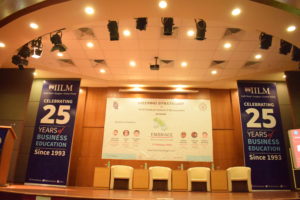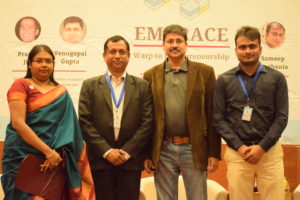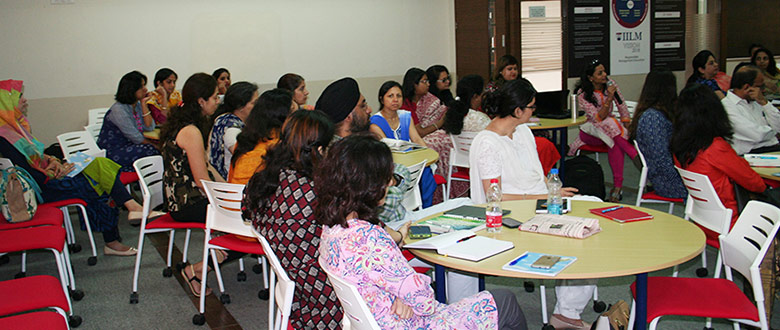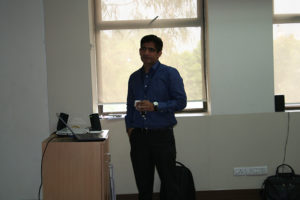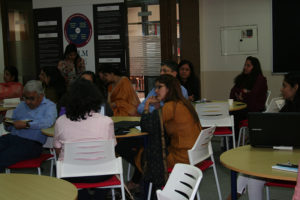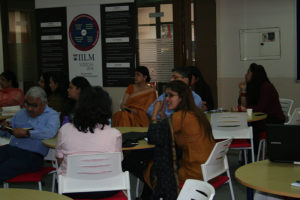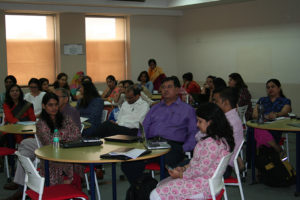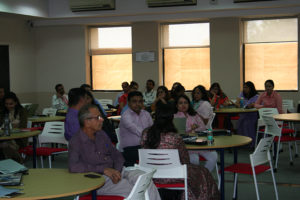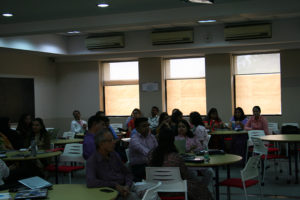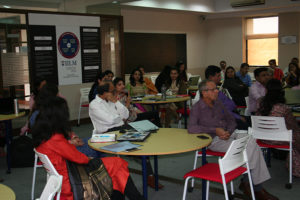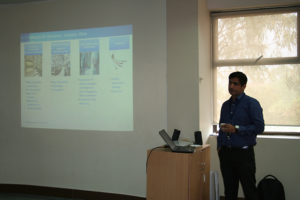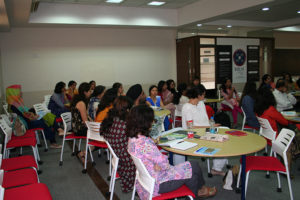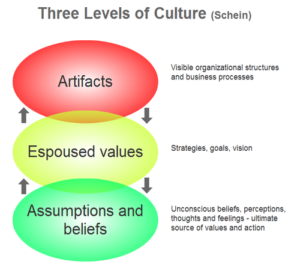International Day of the Girl Child: Six Missions, One voice in support of Women’s Rights.
The United Nations declared October 11th as the International Day of the Girl Child adopted by United Nations in 2011. The International Day of the Girl is an opportunity to highlight the needs and rights of girls and to advocate for greater action and investment to enable girls to reach their full potential throughout their lives. Girls face discrimination and violence in many parts of the world simply because they are girls. They face unique challenges such as early and forced marriage, violence, poverty and other barriers. With this perspective in mind, the United Nations declaration is “to help galvanize worldwide initiatives to better the lives of girls, providing them an opportunity to showcase their talents and reach their full potential.” Taking this up at an international level gives it the needed impetus and focus that it deserves. To celebrate this day, IILM Institute for Higher Education proudly hosted a panel the prestigious ‘Chat with Diplomats’ event, on the occasion of the “International day of the Girl Child”, in partnership with the High Commission of Canada.
The panel discussion was represented by six missions, one voice in support of women’s rights. The esteemed panelists were the Deputy High Commissioner of Canada, Jess Dutton; American Ambassador, Richard Verma; Mexican Ambassador, Melba Pria; Deputy High Commissioner of Australia, Chris Elstoft; His Excellency Ben Joubert, The Ambassador of South Africa and Ambassador of Finland, Nina Vaskunlahti.
Mr. Matt Friesen, Head of Advocacy, Canadian High Commission shared how the Canadian High Commission had organized the campaign ‘Run for Her’ which had more than 400 participants and how they had been looking at creative and innovative ways to celebrate and commemorate the International Day of the Girl since its inception five years ago. As part of this initiative, they had organized a Pan India competition entitled ‘Canadian High Commissioner for the day Challenge’, where Ms. Medha Mishra, an Engineering student from Jaipur who won the competition was honored during the event. Medha underlined her commitment to this cause stating that women ‘can achieve stuff’, in a few succinct words. Post this, Mr Matt Freisen introduced the topic of the panel discussion ‘Glass ceiling or a Sticky Floor’ and invited the diplomats to express their views. He opened the discussion by pointing out as to women often do not get the same opportunities that men get simply because of their gender. He emphasized the need to wrestle with this issue by asking questions like: why are most of the heads of government men, why are most CEOs men, why are most Board rooms male dominated? He added that women continue to face challenges in education opportunities and in career advancement processes. He indicated how this group, a perfect mix of people from diverse geographical backgrounds and representing both genders, was ideal for initiating such a dialogue. He then invited the diplomats to share their views one by one and moderated the event.
The Deputy High Commissioner of Canada, Jess Dutton, the first speaker of the panel, drew attention to the fact that ‘gender equality is not a just a women’s issue, it’s an issue that’s very important for men as well ’and encouraged everyone to work together to ensure that one day gender equality will be achieved for all. He also emphasized the need to celebrate the achievements in the area of gender equality while simultaneously keeping in mind that there is still have a long way to go. Citing examples from Canada, such as giving parental leave instead of maternity leave and the 50-50 gender balanced cabinet in Canada, he demonstrated the initiatives taken by the government to support this cause. In comparison to corporate Canada 48% of the workforce is women. And almost 1 million are self-employed. However, only 16% of the corporate board seats in Canada are held by women and there is a surprising wage gap in Canada, for every dollar that a man earns, a woman earns 72 cents for the exact same job, highlighting the difference in pay structure based on gender. Sharing experiences of his mother, he drew parallels with today’s organizations to demonstrate the progress that have been made. He then cited examples from India and commended the fact that India have women fighter pilots in the Indian Air Force and there are several women bureaucrats, business people, journalists, scientists, entrepreneurs joining this list. He made a reference to India celebrating the Girl Child day every year on 24th January. He then juxtaposed with the story of a 15 year old girl from Bihar, with 2 children, abandoned by her husband, who is now attending school in order to complete her education and be and independent woman. Sharing these examples, he encouraged the audience, the future leaders of India to look out for and help such girls, not only in India, but all over the world.
Mr Richard Verma, The American Ambassador, started by expressing his gratitude to the people from his family and on the work front who were his role models and had inspired and influenced him. He specifically mentioned the role his grandmother and mother have played in being mentors for him. He appreciated how these strong women, despite of having difficult circumstances, worked very hard to provide good life and education to their children. Further he highlighted the role of leaders in bringing about gender parity in the economic, legal and political systems. Mr Verma also stated that while holding leadership positions, it’s important for the leaders to ensure gender parity and make things better for women to climb up the ladder. He added that education, economic opportunity and a fair legal system are essential to ensure level playing field for both genders. He further reiterated the need to encourage breaking the stereotypes and bringing more people to work for gender equality. He stressed on the fact that women empowerment requires collaborative effort and no one country can work in seclusion in order to achieve this.
Melba Pria, the Mexican Ambassador, started her discussion by emphasizing her concern about the need for one day for the Girl Child in the 21st century. She raised questions about how glass ceiling is viewed. The glass ceiling actually the barrier that women face anywhere in the world in their ascending career and Sticky floors mean the downward force that keeps women at middle or low level. She passionately talked about the obstacles that come a women’s way in form of the self-censorship that women are socialized with, the prejudices that women face simply because they are female, the gender based discrimination and sexism that is prevalent. She highlighted that the glass ceiling is a powerful and invisible barrier that hinders the ascending career of women. Comparing the situation in the two countries she mentioned that in though in India 46% of women are highly educated, only 27% of those women are counted as workforce and get paid, whereas in Mexico, 48% of the women are regarded as workforce. She gave figures to driver home her point that though in Mexico 18% are Financial Officers, 14% Corporate Controllers, 12% Chief Marketing Officers, but only 4% CEO’s!. Reflecting on the reasons behind gender discrimination, she shared the Mexican saying that ‘Women usually have three jobs – they are in their jobs 100% of the time they are mothers and daughters, and then they are lovers and wives, to their husbands’. She highlighted that Canada has 27% of its parliament being women, 48% of the Mexican parliament is women and only 12% of India’s parliament is women. Adding on a lighter note she said, “I wonder if men can say the same thing”. Drawing on the experience of Ms. Bianca Trevino, of being assertive about her right to enter the exclusive club of the Mexican Council for Businessmen, Her Excellency Melba Pria brought out the lack of and therefore the need for more successful women role models for the women workforce to look up to. Citing the McKenzie report she shared how closing the gender gap can help increase the GDP of India by 60% by 2025. Stating that women are the largest untapped resource in the world, she enumerated solutions for dealing with this challenge: Break the political leadership ceiling, and conquer the traditional male associated fields. Mentioning the book Why So Slow, by Virginia Valian she too emphasized the need to acknowledge how far we have come, while being conscious of the way forward. She ended her speech beseeching the audience to be aware that ‘this is not a fight against men, it’s not a fight between men and women, and it is the fight of both genders for equality and fairness’.
Chris Elstoft, The Deputy High Commissioner of Australia, began his address by sharing that though in his early years when he was growing up, he was not concerned about the ‘He-for-She’ cause. But with the birth of his daughter, there has been a major change in this perspective and now he is very passionate about and engaged with women’s issues. Taking the example of his own eight year old daughter, Mr. Elstoft shared how she believes she is equal to her brothers in every which way, and has the same opportunities that are available to them, but he is deeply aware of the situation that there are differences that exist in society. He added that ‘her safety is not the same as her brothers’, her prospects in the workplace are also not the same. He talked about the initiative that was started about 2 years ago, where they tried to analyze and answer the question as to why, women who constitute 50% of the workforce till a certain level in foreign service drops down to 30-32% by the time thy enter the senior executive rank? What is it about their organization that sees this massive crash in the numbers of women who are entering the leadership cadre? There are a number of tangible barriers that hold women back. One is that foreign ministries in particular struggle with is because of the demands that are placed on their staff. They staff around from country to country, dragging their families’ with them, which becomes difficult for women whose husbands are unwilling to move for their wife’s career, the way promotions and recruitments are done, and some issues around culture. To help women reach higher leadership roles in the organization, a number of changes have been introduced, such as making the workplace more flexible, enabling part time work, working from home, remote work, using IT solutions to facilitate people being more productive but also being able to balance work and family to name a few. Above all, he emphasized that they are trying to drive a more inclusive style of leadership culture throughout the department. He ended by saying that having a parity of genders in organizational leadership is not only the right thing to do but it is also the smart thing to do.
His Excellency Ben Joubert, The Ambassador of South Africa started his talk by acknowledging the major role women have played in attaining freedom as well as being the real democracy in South Africa. After their constitution got signed in 1996, there was a law passed which stated equal opportunities or equal employment. Those are affirmative laws which give specific allowance for 50% of women in workplace. South Africa is a country which gives lot of attention to issues of women and child rights, there are many initiatives when it comes to that, one is celebrating their women’s day on 9th August every year. This day was specifically chosen because of the march of the women 60 years ago. At the same time he expressed his concerns regarding the fact that despite having various laws on paper, women were unable to get equal opportunities. He also mentioned various initiatives started by their Government in order to facilitate women empowerment but at the same time, he criticized the need to have so many initiatives even today, in order to get women on equal pedestal with men, he said- “when we look at these initiatives they are there because women are not in a place where they need to be in society and workplace. If you have more initiatives it means you have more serious challenge to address.”
Nina Vaskunlahti, The Ambassador of Finland, emphasized the need for a higher women representation in their political arenas because of the different perspectives that women add. She shared that in Finland, approximately half of the members in Finnish Parliament are women and they actively work along with their male counterparts in organizing political events. Ms. Vaskunlanhti stressed on the fact that women empowerment is not sole responsibility of women, it order to achieve equality, men need to be active members of the same. She also mentioned the importance of having role models and gave example of Finnish Defense minister- “In 1990 Finland got its first Defense female minister, she was first female defense minister in the whole world. A finish minority made it even more interesting. It was position taken by minority. So breaking the glass ceiling twice. First coming from minority then being a women and she did a pretty good job as minister of defense and she also opened possibilities for girls to enter military services until then it was a profession compulsory for boys but then it became sort of possibility for girls”. In conclusion she advised, “To be bold, to be brave, to be themselves” in order to break the glass ceiling.
All the panelists spoke about how important it is to invest in the education of the girl child, because when they are educated, healthy and informed they not only empower themselves, but also their families and the communities around them. The issues ranged from education to reducing gender disparity and increasing women involvement in leadership roles across organizations and politics. This initiative is a small step in this direction.
The event ended by Dr. Bhaskar Chatterjee, Senior Director, thanking the panelists for sharing their views on a subject that is relevant to all people and all geographies. He briefly talked about IILM’s contribution towards responsible management. He shared that IILM offers 10% fee waiver to all its girl students across its three campuses in Delhi NCR and offers flexible work arrangements to all women employees. IILM Institute is a member of the United Nations Global Compact Initiative “PRME” and has earned the coveted ‘Champion Business School’ status. It has a global study programme which connects its students and faculty with institutions of repute in Germany, France, Spain, Canada, the United Kingdom and Switzerland.
The evening ended with informal interactions between Diplomats and the students and faculty of IILM over high tea, leaving us all motivated to take this cause forward.
